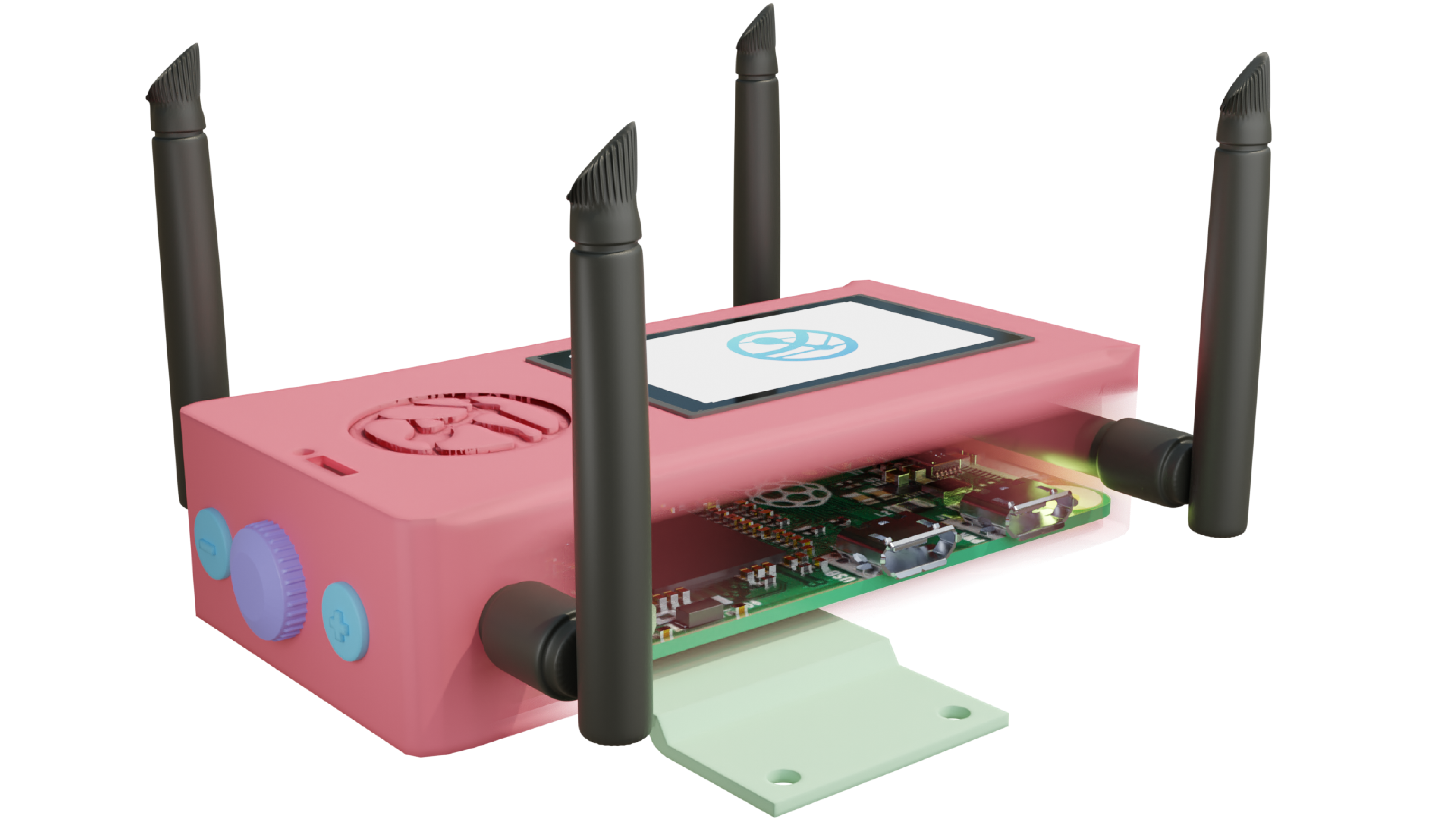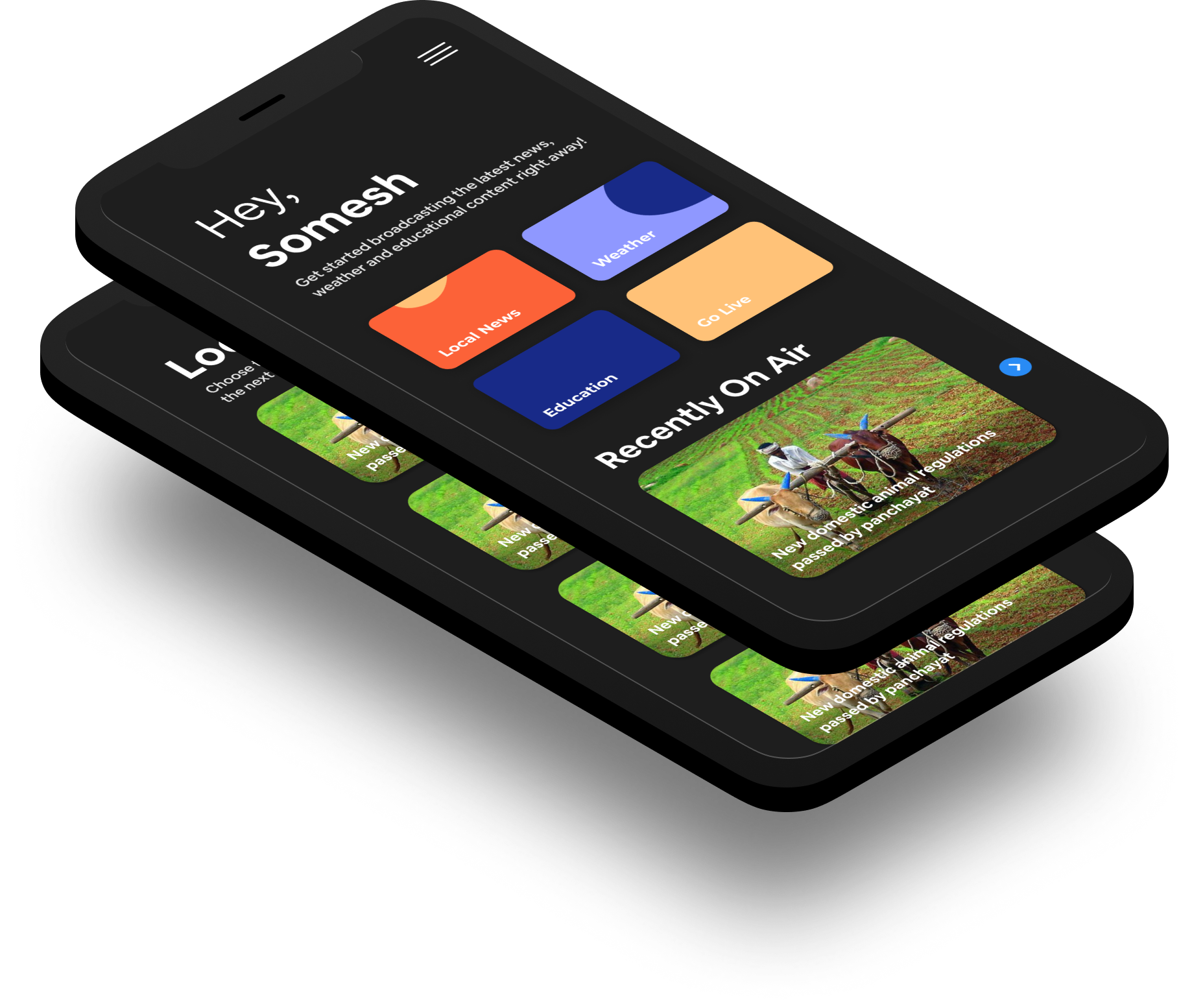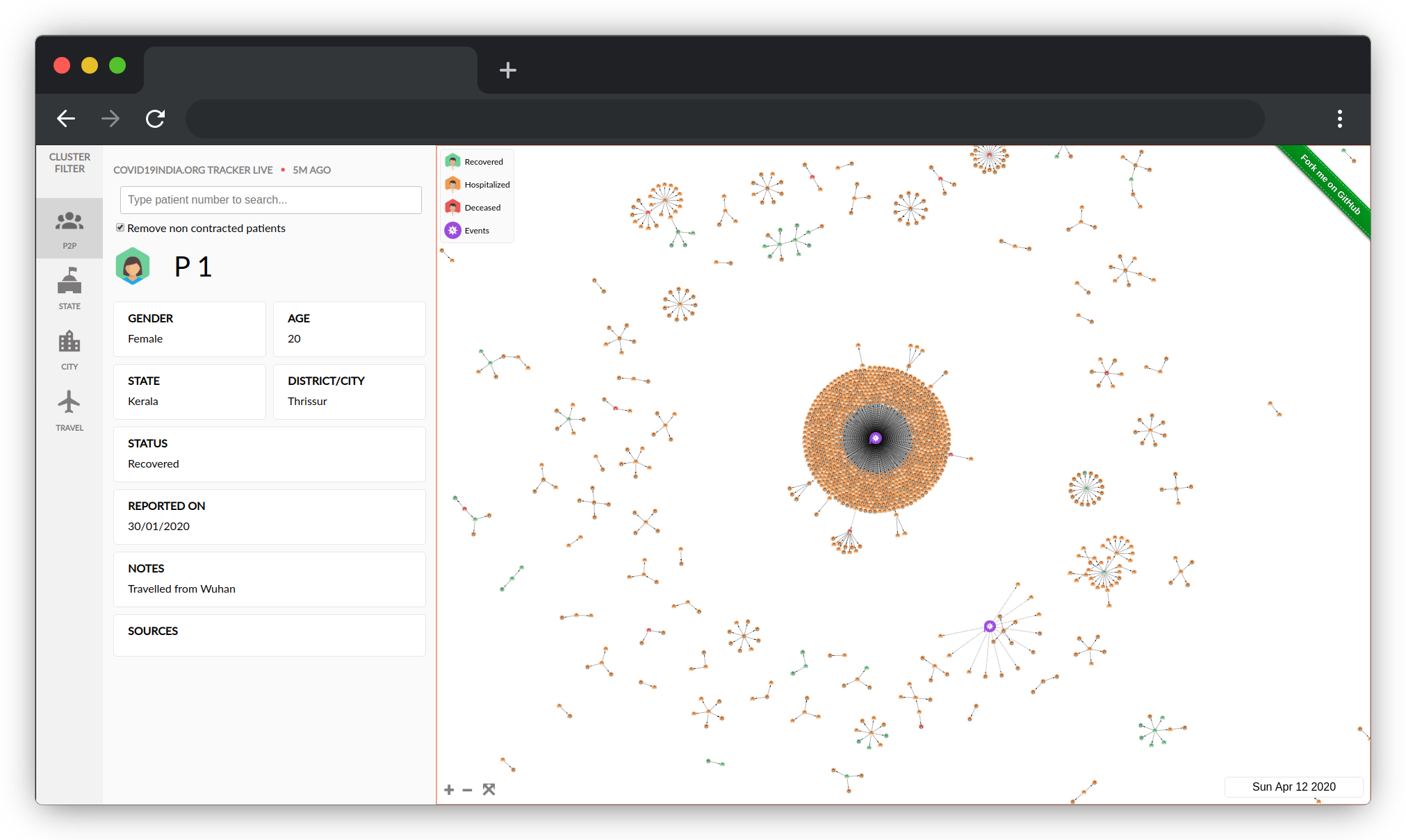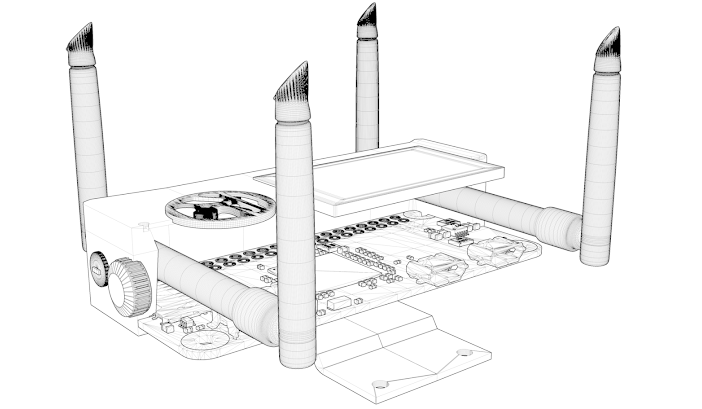The difference between awareness and ignorance.
Narad is the solution to bridge the information gap that exists in almost every region around the globe.

The Problem
COVID-19 has caused massive destruction as cases pass the 1 million mark. It is a disease which can only be prevented, for the near future. That being said, it is evident that awareness and advocacy are the most important tools we have to inform people about the disease, toll-free lines, symptoms, food distribution centres, etc.
In most first-world countries (the US, UK, etc), this is done through the internet, radio broadcasts or the television. However, each country’s strategy against the coronavirus has to be altered based on its economical, geographical and social diversities. That being said, countries with less geographical, social, and linguistic uniformity (such as India) have varied access to information, especially in rural areas in non-developed countries where such facilities may be sparsely available, usually outdated and inaccessible to a large population who speak vernacular languages.
For more context, India has 122 major languages and 1599 others according to the 2001 census. Additionally, there is inconsistent data about the virus in various places making it very easy for the public to be directed towards misinformation and leading to ineffective deployment/donations in multiple areas.
- A large population
- Wide socio-economic disparities
- Unequal access to resources
- Unequal access to information/Lack of awareness
- Linguistic diversities even among close areas (Nagaland, a state in India, has as many as 15 recognized different languages and 20 different dialects spoken in it)
- Extremely isolated as well as densely populated regions
The current methods of information broadcasting aren’t sufficient or viable for many affected areas especially the isolated rural areas which speak their own dialect/language most of which tend to have a lower literacy rate and reduced access to infrastructure and resources.
Moreover, in the climate of such a pandemic, physical visits for advocacy can prove to be hazardous, and impractical due to the lockdown in place. Additionally, students who have access to the internet at this time can attend online classes, but the underprivileged do not have access to learning resources which further reduces the opportunities they have, increasing the socio-economic gap, a gap which can only be filled by local tuition.
Multiple people throughout the globe are not aware of governmental policies, location of food distribution centres in their localities, toll-free lines, or the people who are self quarantined around them, etc. because even the state broadcasts are in a language that most people living in rural areas cannot comprehend.
With the onset of the virus, migrant daily wage workers are walking back to their villages on foot for days on end, and need shelter. Extremely localised broadcasting will allow the government to notify the workers wherever there is shelter along the way. Therefore, the solution in mind is localised broadcasting which can be easily administered through the rural and urban local authorities (panchayat in India).
The solution includes a way for us to gather data ourselves using our own tracker with a 10m user base to fully comprehend the problem. The solution is Narad and our COVID 19 tracker.
Competitive Analysis
| Radio | Television | Internet | Narad | ||
|---|---|---|---|---|---|
| Localised Updates | ✖ | ✖ | ✓ | ✓ | ✓ |
| Quick Updates | ✓ | ✓ | ✖ | ✓ | ✓ |
| Usable with Cheap devices | ✓ | ✖ | NA | ✖ | ✓ |
| Prevalence | ✓ | ✖ | ✓ | ✖ | NA |
| Cheap means to transmit/distribute | ✖ | ✖ | ✓ | ✖ | ✓ |
| Illiterate can operate/consume | ✓ | ✓ | ✖ | ✖ | ✓ |
| Can accommodate for the language barrier | ✖ | ✖ | ✓ | To an extent | ✓ |
| Setup Costs | High | High | High | Mild | Low |
Our solution
The Narad Mesh Network
A single transmitter unit is needed to send out an FM wave by modulating CPU cycles, which can then be transmitted via a mesh network of ultra-low-cost transmitters. This network is easy and quick to install and can be set up in a decentralized manner without an official rollout. Additionally, it doesn’t require a smartphone for use, being compatible with virtually any commonly owned feature phone or FM receiver, allowing even the illiterate to make use of it. It can help in spreading information and enabling remote education.
Narad tunes down the CPU clock cycles on a single thread of a Raspberry Pi Single Board Computer from ~900 MHz to the 87.5-107.5 MHz FM range. It uses a WiFi mesh-based network to communicate between the nodes so only a single node which spans across a region needs a connection to the internet, to retrieve weather data etc or act as a transmitter. The device is extremely cost-effective to make.
| Component | Quantity | Price |
|---|---|---|
| Raspberry Pi Zero W | 1 | $9 |
| Solid Gauge Wire as Antenna | - | $2 |
| Manufacturing (worst-price) | Box and Buttons | X |
| Total | - | $11+X |
Moreover, only a few devices would be required per village, the people will receive the signals through any regular FM receiver, something that isn’t expensive, doesn’t require a cable/internet connection and is easily accessible, thus reducing overall broadcast cost throughout the country.
The App

We also have a supplementary and optional app, with a Local News feature, dispersing information relating to agriculture, the pandemic and beyond. The ‘Go LIVE’ feature interfaces through WiFi with the Narad units to start a local broadcast information locally, from the device. Additionally, it can be used to change the order of transmission for scheduled broadcasts.

One of our members, Somesh, has developed a tracker for COVID-19, which tracks the spread in India, and visualizes it using a cluster-graph implementation. It has 9.8 million active users according to Google Analytics, and has gained prominence in the global community. We have analysed the data to help form our concept. The tracker will allow us to do an effective implementation of our device allowing us to analyse the effects of the virus across multiple regions.
Other Uses
Narad has extensive use after the pandemic has passed us as well. If governments and organisations invest in this product, later on, they can use it to combat other problems such as localised man-made and natural disasters, illiteracy, farmer suicide (by providing agro advisory) along with further supporting other social projects by giving them a platform to broadcast on especially considering that the smartphone penetration for India was 5.3% as of 2019. First-hand experience of the prolonged effects of our product will further instigate more demand in the market. It’d establish a sense of solidarity among citizens of the same locality, by providing a way to voice their opinions and consume news thus reducing conflicts in the long run and better governance at the local and union level.

